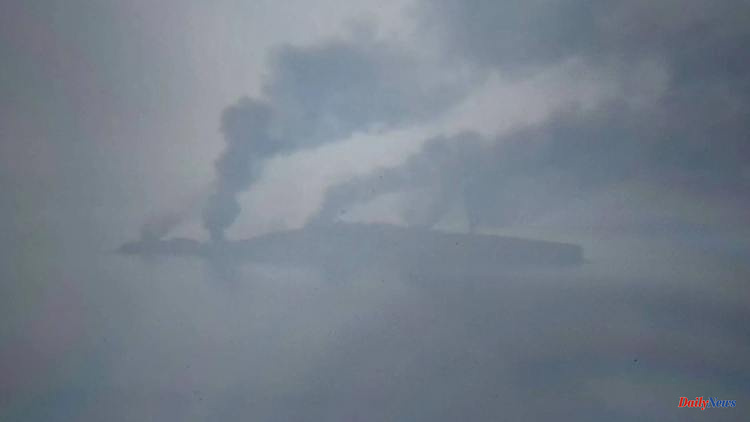At the beginning of the war, Russian troops conquer the strategically important Snake Island. Now Moscow's armed forces are giving up the island again. It is a painful defeat for the Kremlin. Without Western arms supplies, however, the Ukrainian success would probably not have been possible.
While Russia speaks of a "gesture of goodwill," Ukraine is assuming an important military victory for its troops: After a good four months, the Russian army announced its withdrawal from Ukraine's Snake Island in the Black Sea. The Russian Defense Ministry said the soldiers had accomplished their mission and have now been withdrawn to allow Ukraine to export grain by sea.
But the real reason might be different. The Russian soldiers left Snake Island "because they could not withstand the fire of our artillery, rockets and air raids," Ukrainian army chief Valeriy Zalushny triumphed on Telegram. According to Zalushny, the Ukrainian-made Bohdana howitzer would have played an important role in the liberation. At the same time, the general thanked the West for its support.
Numerous observers also see the recent arms deliveries to Kyiv as an important factor in the withdrawal of Russian troops. Just last week, the Ukrainian armed forces received HIMARS multiple rocket launchers from the United States. The mobile weapon systems can fire multiple precision-guided missiles simultaneously at targets up to 80 kilometers away. The projectiles are also difficult to intercept by anti-aircraft devices. The French Caesar-type howitzers may also have caused problems for the occupiers of Snake Island. The truck-mounted 155mm guns can accurately hit targets up to 40km away.
Snake Island, 35 kilometers off the coast, is considered a strategically important post for monitoring sea routes in the north-western part of the Black Sea. Russia had conquered the island shortly after the start of the war and thus controlled access to Odessa. After the sinking of the Russian cruiser "Moskva", in addition to the short-range anti-aircraft system Panzir-S1, several Tor systems were stationed on the island to protect the Russian blockade fleet. As a result, spectacular air raids by the Ukrainian air force like in April were no longer possible.
But in the past few days, drone footage has shown violent explosions on the island. There were no official confirmations, but according to reports, the French Caesar and the US HIMARS were used in addition to the Ukrainian Bohdana howitzer, of which only one example exists. After the Ukrainian armed forces reported the destruction of another Pantsir S1 system in the morning, Moscow announced that the island would be abandoned a little later.
For the Kremlin, the loss of Snake Island is a painful defeat. Because without air defenses on the island, the Russian fleet is vulnerable to drone and missile attacks. As a consequence, Moscow's ships will have to move further away from the coast. The maintenance of the naval blockade is at least made more difficult. But another point is likely to hurt more: the evacuation of Snake Island shows Moscow that supplying Western arms to Ukraine can make all the difference.












